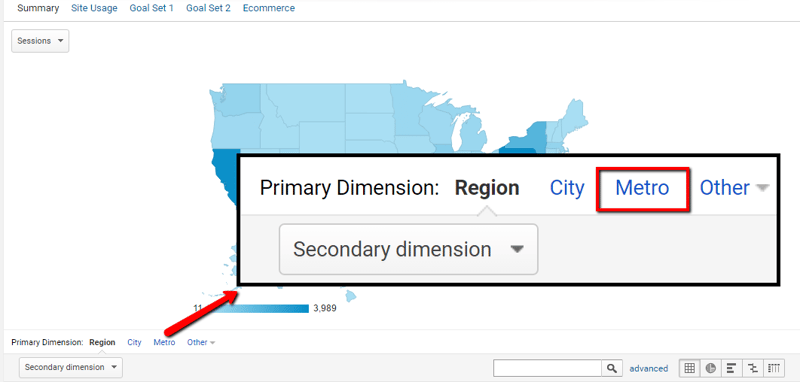Take Full Advantage Of Coverage Accuracy With Additional Measurement in Google Analytics
Recognizing how to make best use of reporting accuracy with second dimensions in Google Analytics can significantly improve the depth of insights derived from information evaluation. By incorporating secondary dimensions strategically, marketing professionals can discover covert patterns and relationships that might not be promptly obvious when evaluating main metrics alone. This nuanced strategy enables a more detailed understanding of customer behavior and campaign performance, leading the way for more targeted and effective decision-making. The usage of second dimensions holds the vital to opening a wide range of beneficial information that can change the efficiency of digital advertising and marketing techniques.
Recognizing Secondary Measurements in Google Analytics
Additional dimensions allow individuals to sector and even more study data beyond the key dimension picked. While the key dimension might present the total number of page sights, including an additional measurement such as 'source/medium' can provide insights into where the website traffic originated from.
Additionally, recognizing secondary dimensions is crucial for creating a lot more tailored reports tailored to certain organization goals. By choosing the appropriate combination of key and secondary measurements, experts can discover patterns, fads, and correlations that might otherwise stay concealed. This nuanced strategy to information evaluation empowers companies to make educated choices based on an extensive understanding of individual habits across different measurements.

How to Apply Additional Measurements
When leveraging additional dimensions in Google Analytics, the useful application includes picking specific data specifications to additional improve insights beyond the key dimension's scope. To use additional dimensions effectively, start by accessing the record or dataset where you want to delve deeper into the information. Within Google Analytics, locate the primary measurement that you are currently analyzing. As soon as determined, click the dropdown food selection identified "Additional Measurement." This action will certainly reveal a listing of additional parameters that can be included to your analysis. Pick the second dimension that straightens with your analytical objectives, such as 'Source/Medium,' 'Tool Group,' or 'Location.' By choosing an additional dimension, you can gain much more in-depth insights into user behavior, demographics, or procurement networks. Bear in mind that secondary dimensions assist give context and granularity to your key measurement information, enabling you to extract more actionable and meaningful insights from your Google Analytics reports.
Leveraging Second Dimensions for Insights
Making use of additional dimensions in Google Analytics permits for a much more thorough analysis of information, offering important understandings beyond the main dimension's range. By leveraging secondary measurements, individuals can dive deeper right into the performance metrics of their web site or application, discovering hidden patterns and patterns that might not be immediately evident when just taking a look at key measurements.
One key advantage of using additional dimensions is the capability to sector and filter information more specifically. This can help marketers and experts better recognize the habits of certain customer sectors, such as brand-new site visitors versus returning site visitors, or website traffic coming from different geographical areas.
Furthermore, secondary dimensions enable individuals to compare and contrast various data points within the same report, supplying a much more all natural view of performance (Secondary Dimension in Google Analytics). As an example, matching the main dimension of touchdown web pages with second measurements like demographics or devices can disclose which pages are most reliable in engaging customers on various devices or from various market groups.
Basically, leveraging additional measurements in Google Analytics equips customers to extract richer understandings from their data, bring about even more enlightened decision-making and inevitably, boosted efficiency.
Ideal Practices for Secondary Dimensions
When assessing data in Google Analytics, including secondary dimensions properly enhances the depth of understandings acquired from the key metrics. Choosing appropriate second measurements helps in supplying context and a more clear understanding of the information being analyzed.
Moreover, it is advised to limit the number of secondary measurements made use of in a solitary record useful reference to avoid overwhelming the analysis with as well much details. Focusing on a few essential additional dimensions each time can result in even more workable and concentrated understandings. In addition, take into consideration experimenting with different combinations of primary and secondary dimensions to discover special fads and patterns that may not be evident when taking a look at the data in isolation.
Advanced Analysis Techniques With Secondary Measurements
Discovering elaborate data partnerships with the strategic application of second measurements can unveil nuanced understandings that raise the depth of evaluation in Google Analytics. By incorporating second dimensions with key data sets, innovative analysis strategies can be utilized to draw out important details.
In addition, secondary measurements can enhance the evaluation of conversion courses by supplying additional context. Recognizing the different touchpoints a customer communicates with prior to transforming can be vital in optimizing the client trip - Secondary Dimension in Google Analytics. By utilizing additional measurements to explore specifics such as web traffic resources or gadgets used, online marketers can customize approaches to target high-converting networks successfully
Final Thought

To boost information analysis and gain much deeper insights into user behavior, understanding second measurements in Google Analytics is imperative - Secondary Dimension in Google Analytics. Second measurements allow individuals to sector and further dissect data beyond the primary measurement picked. While the key measurement may display the total number of page views, including a second dimension such as 'source/medium' can give insights into where the traffic stemmed from.When leveraging secondary measurements in Google Analytics, the practical application involves picking details information criteria to further fine-tune understandings past the main measurement's extent. Keep in mind that additional dimensions recommended you read assist offer context and granularity to your main dimension data, enabling you to extract even more workable and significant insights from your Google Analytics reports